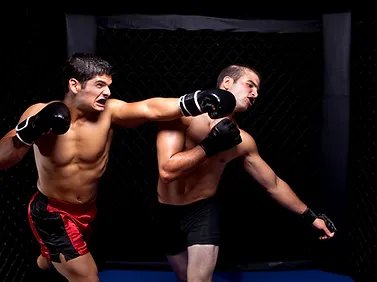Temporomandibular Joint (TMJ) Dysfunction
Injury Guide

Do you suffer from persistent jaw pain? Don’t let this condition hinder your quality of life. TMJ dysfunction can cause pain and discomfort in the jaw joint and surrounding muscles, affecting your ability to eat, speak, and even participate in athletic activities.
Symptoms:
Symptoms of TMJ dysfunction can vary from person to person, but common signs include jaw pain, clicking or popping sounds when you open or close your mouth, difficulty in fully opening or closing the mouth, headaches, earaches, and facial pain. These symptoms can be disruptive and impact your everyday life, making it crucial to address the underlying causes.
Anatomy:
The TMJ is a complex joint located on both sides of your head, just in front of your ears. It connects your mandible (lower jaw) to your temporal bone, which is a part of your skull. The TMJ consists of several components that work together to facilitate smooth jaw movement and proper functioning.
The joint itself is comprised of the mandibular condyle, a rounded projection at the end of the mandible, and the temporal bone’s articular fossa, a concave depression that accommodates the condyle. Between the condyle and the fossa is a thin, fibrous disc called the articular disc, which acts as a cushion and separates the bony surfaces of the joint.
Surrounding the TMJ, various muscles come into play to control jaw movement. These include the temporalis muscle, which aids in closing the mouth, and the masseter muscle, responsible for chewing and biting. Other muscles involved in jaw movement include the lateral and medial pterygoids, which contribute to lateral and forward jaw movements.
When the TMJ functions properly, the articular disc smoothly glides along with the condyle during jaw movements. However, several factors can lead to dysfunction in this joint and disrupt its normal functioning.
TMJ dysfunction may occur due to misalignment or malocclusion of the jaw, which can be caused by factors such as genetic predisposition, dental abnormalities, or trauma. This misalignment can cause the articular disc to shift, leading to pain, clicking or popping sounds, and limited range of motion in the jaw.
Muscle imbalances can also contribute to TMJ dysfunction. If certain muscles become overactive or tight, they can exert excessive pressure on the joint and surrounding structures, leading to discomfort and dysfunction. Additionally, habits like teeth grinding or clenching, often associated with stress, can strain the TMJ and contribute to the development of TMJ dysfunction.
Causes:
TMJ dysfunction can have several contributing factors, such as jaw misalignment, muscle imbalances, excessive teeth grinding or clenching (bruxism), stress, and previous jaw injuries. As an athlete, the repetitive motions, impact, and physical demands of your sport may exacerbate these factors, leading to TMJ dysfunction.
Rehab Strategies:
A variety of treatment strategies can be employed to address Temporomandibular Joint Dysfunction (TMJD) and promote effective rehabilitation. Among these approaches, dry needling is one technique that can be utilized alongside other treatments to alleviate symptoms and improve jaw function.
Dry needling involves the insertion of thin, solid needles into trigger points or tight knots within the affected muscles. This technique stimulates sensory nerves, leading to muscle relaxation and increased blood flow. By targeting specific trigger points associated with TMJD, dry needling can help relieve muscle tension and reduce pain, contributing to overall improvements in jaw mobility and function.
In addition to dry needling, other treatment modalities are commonly used in TMJD rehabilitation. Manual therapy techniques, such as joint mobilization and soft tissue manipulation, can help restore proper alignment of the jaw joint and alleviate muscle imbalances. These hands-on interventions aim to improve joint mobility, reduce pain, and enhance overall function.
Exercise also plays a crucial role in TMJD treatment. Specific exercises are designed to stretch, strengthen, and coordinate the muscles involved in jaw movement. These exercises can help improve muscle balance, stabilize the joint, and enhance jaw function. They may include stretching exercises to increase flexibility, strengthening exercises to improve muscle control, and coordination exercises to promote smooth jaw movements.
Furthermore, education and self-management strategies are essential components of TMJD rehabilitation. Patients can learn about proper posture, ergonomics, and relaxation techniques to minimize jaw stress and reduce symptoms. Additionally, lifestyle modifications such as dietary changes (e.g., avoiding hard or chewy foods) and stress management techniques may be recommended to support recovery and prevent symptom exacerbation.
Let’s
Work
Together
Ready to get started? Click here. General questions? Read our FAQ page. Have a specific question? Leave us a message!
